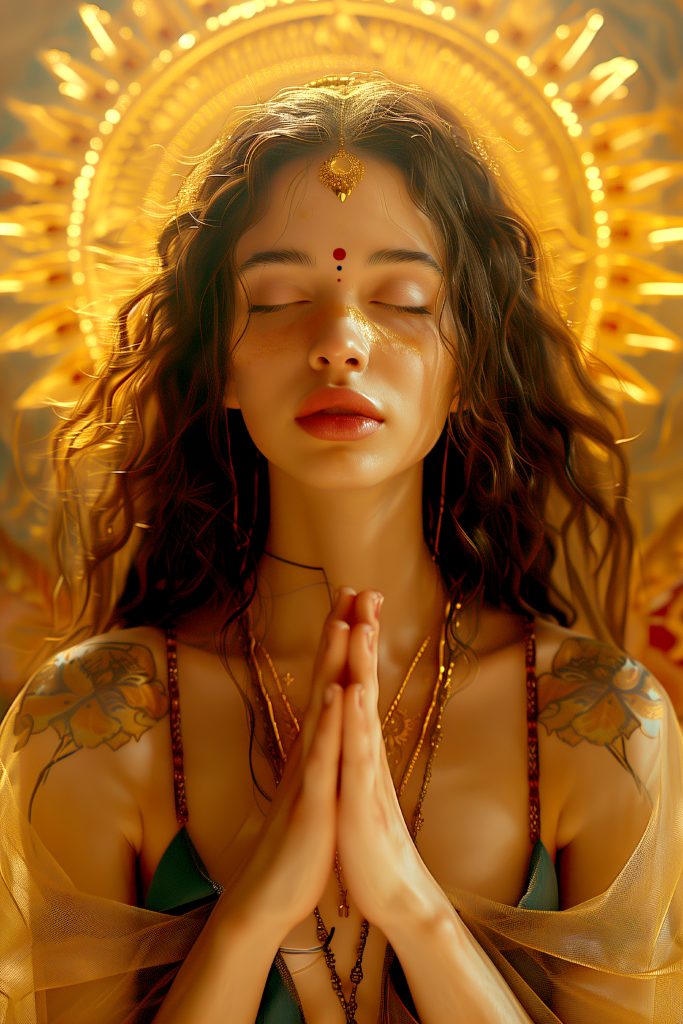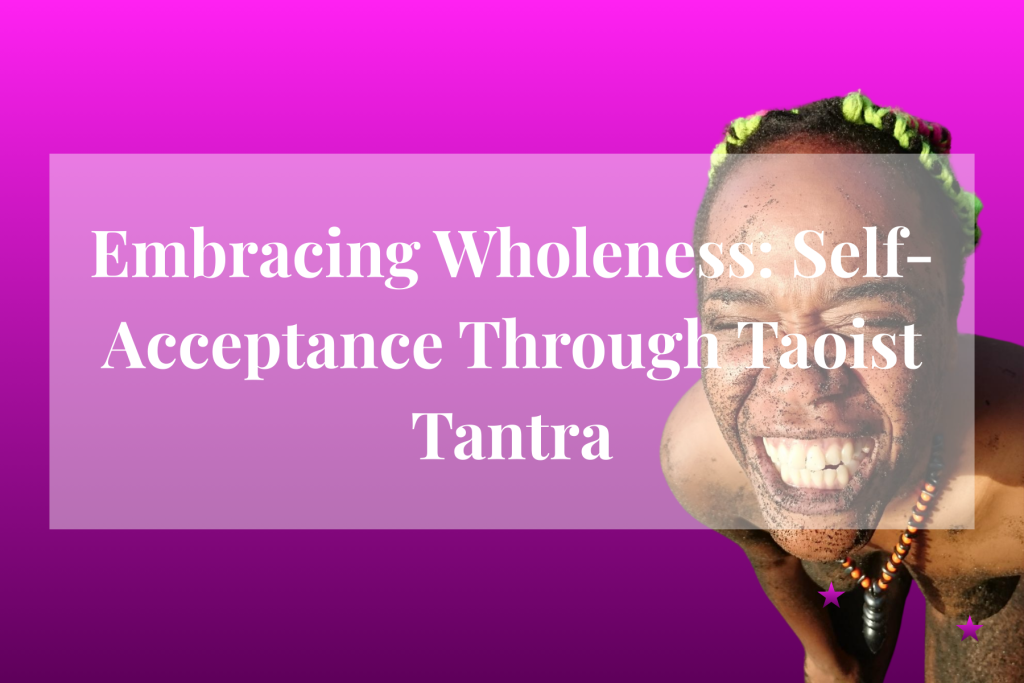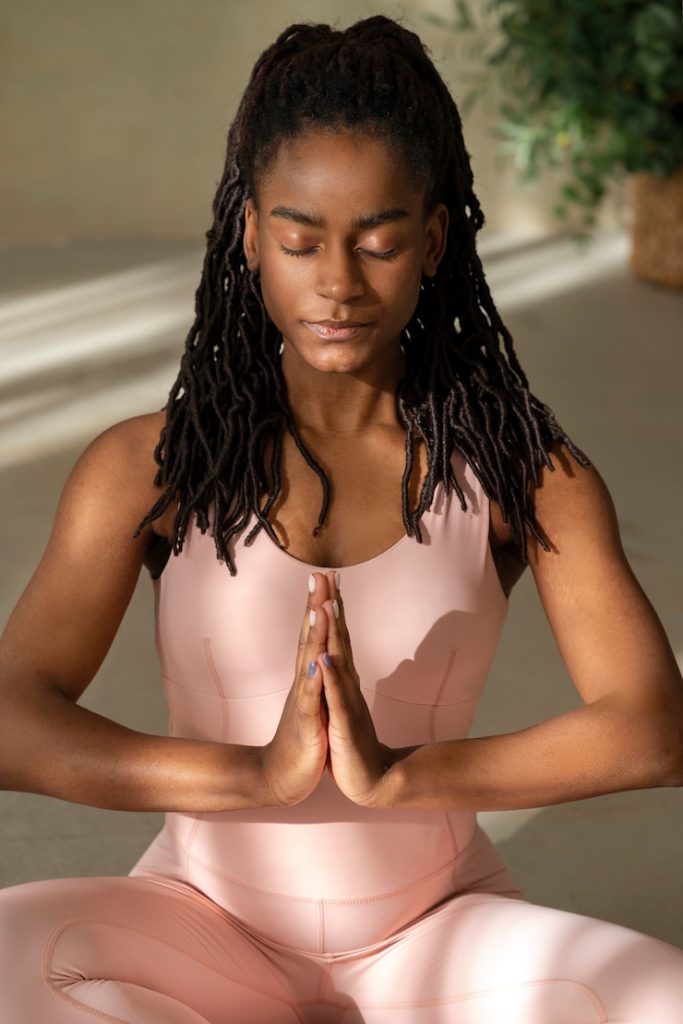Understanding the Sacred Union of Shiva and Shakti in Tantra

Hidden deep within the esoteric teachings of Tantra lies a story that transcends mythology, religion, and even human understanding. It is not merely a story from ancient texts, but a living reality that resonates at the core of creation itself. The union of Shiva and Shakti is more than a symbolic embrace. It is the dynamic interplay of consciousness and energy, the masculine and feminine principles that form the very structure of existence. This union speaks of something eternal and transformative, a balance that must be experienced rather than merely understood. For seekers on the Tantric path, understanding this sacred union is not optional. It is foundational. But how does one begin to comprehend a relationship that is cosmic in scale, subtle in nature, and yet deeply personal in its implications? To find out the truth about Shiva and Shakti, you must step into a world where spirit and matter, silence and sound, stillness, and movement become one. It is here that the teachings of Tantra invite us, offering not just knowledge, but awakening. The Philosophical Roots of Shiva and Shakti At the core of Tantric philosophy is the concept that the universe is born from, sustained by, and ultimately dissolves back into a unified field of consciousness and energy. This field is personified as Shiva and Shakti. Shiva represents the static, unchanging consciousness, the eternal witness. He is pure awareness, unmanifest and formless. Shakti, in contrast, is dynamic, ever-changing, and creative. She is the force behind all movement and manifestation. Together, they embody the dual aspects of the same reality. The significance of this pairing is not just in their roles as deities, but in what they symbolize within the cosmos and within each individual. Tantra teaches that everything we see, touch, and experience is an expression of Shakti, but none of it could exist without the silent presence of Shiva. Just as electricity requires both a positive and negative charge to flow, existence requires both consciousness and energy. When the two are in harmony, creation unfolds. Beyond the Myth: The Inner Alchemy of Tantra Traditional stories often portray Shiva and Shakti as lovers, meditating together in the Himalayas, dancing with unrestrained abandon, or merging into one form as Ardhanarishvara. These myths, though powerful, are not meant to be taken literally. They serve as metaphors for the inner union that Tantra seeks to cultivate within the practitioner. The path of Tantra is not about external worship alone. It is about experiencing the sacred dynamics of Shiva and Shakti within one’s own body and consciousness. Tantric practices often involve breathwork, visualization, sound, and movement, all designed to awaken the dormant energies within. Shakti is said to reside as Kundalini energy at the base of the spine. When aroused and guided through the chakras, she seeks union with Shiva at the crown. This inner journey mirrors the cosmic dance of creation. The result is not just spiritual insight, but a profound transformation of the self. The Role of Shiva and Shakti in Daily Life Although these concepts may seem abstract or otherworldly, Tantra emphasizes the integration of the sacred into everyday life. Shiva and Shakti are not confined to temples or rituals. They are alive in every moment of awareness, every act of creation, and every expression of love and stillness. In fact, Tantra urges practitioners to view the world itself as sacred, because it is the living play of these two forces. When a person cooks a meal, sings a song, nurtures a child, or simply observes their thoughts in meditation, they are engaging with Shakti and Shiva. Awareness of this interplay brings depth to ordinary experiences. It turns mundane routines into opportunities for spiritual growth. Shiva and Shakti are not abstract principles. They are the heartbeat of reality, and recognizing them can transform the way we live, relate, and evolve. Sexuality, Sacredness, and Misunderstanding in the West One of the most controversial aspects of Tantra, particularly in the West, is its association with sacred sexuality. While some branches of Tantra do include sexual practices as a path to divine union, this is only one part of a much broader tradition. Unfortunately, the popularized version of Tantra often reduces it to sensual pleasure, missing the deeper spiritual framework. In authentic Tantric systems, sexuality is seen as a sacred expression of Shakti and Shiva coming together. It is not about indulgence, but about transformation. Through conscious union, practitioners can transcend the ego, dissolve separateness, and taste the divine. However, these practices require discipline, intention, and spiritual maturity. When misunderstood or taken out of context, they lose their power and meaning. True Tantra is not hedonism. It is devotion to the sacred in all things, including the body. The Relevance of the Union in Modern Spirituality In today’s fragmented world, the teachings of Shiva and Shakti offer profound relevance. Many spiritual paths prioritize transcendence, focusing solely on the higher realms, the formless, or the abstract. Tantra, however, affirms both the transcendent and the immanent. It celebrates the divine not only in meditation or prayer, but also in relationships, emotions, and earthly experiences. This balanced approach is especially crucial now, as people seek wholeness in the midst of rapid change and disconnection. The sacred union reminds us that true spirituality is not about denial or escape. It is about embracing the full spectrum of life. Shiva without Shakti is inert. Shakti without Shiva is directionless. Together, they form a complete and living truth. Whether one is on a path of devotion, knowledge, or self-inquiry, understanding this union deepens the journey. Conclusion To grasp the sacred union of Shiva and Shakti is to enter a space where boundaries dissolve and the soul remembers its source. This is not just a topic for intellectual discussion or philosophical reflection. It is a lived experience, an inner awakening, and a call to integrate the divine masculine and feminine within. The path of Tantra is not about worshipping distant gods. It is about embodying the sacred here
Embracing Wholeness: Self-Acceptance Through Taoist Tantra

In a world constantly pushing us to improve, fix, and change ourselves, self-acceptance can feel like a radical act. Many of us spend years chasing perfection—physically, emotionally, spiritually—believing that we must earn our worth. But in the teachings of Taoist Tantra, we are invited into a different perspective: one that honors our true nature, embraces our wholeness, and leads us gently back to harmony with ourselves and the universe. Taoist Tantra, an ancient path rooted in Taoist philosophy and Taoist alchemy, emphasizes balance, flow, and the integration of dualities—light and dark, masculine and feminine, yin and yang. At its core, Taoist Tantra is not about striving, but softening. It is the practice of aligning with the natural rhythms of life and recognizing that everything we need is already within us. In the context of self-acceptance, Taoist Tantra teaches that we are not broken. We are not something to be “fixed,” but rather to be fully experienced. Our emotions, our desires, our flaws—these are not signs of failure, but sacred aspects of our humanity. Just as the Tao flows through rivers, winds through trees, and rises with the sun, it flows through us, in all our chaos and calm. A central practice in Taoist Tantra is cultivating awareness and presence in the body. Instead of escaping discomfort or shaming ourselves into silence, we are encouraged to turn inward with compassion. Through breathwork, meditative movement, and sexual energy cultivation (such as microcosmic orbit or inner smile meditation), we learn to feel and honor the sensations and emotions that arise—without judgment. This embodied approach dissolves the separation between the spiritual and the sensual. In Taoist Tantra, sexual energy is not taboo or shameful—it is life force energy, known as jing. When we learn to move this energy through the body with love and intention, we reconnect with a deeper sense of vitality and self-worth. We stop outsourcing our value and start experiencing our inherent radiance. Self-acceptance is not a destination but a process—an unfolding. Taoist teachings remind us to be like water: adaptable, gentle, yet powerful. We don’t force healing or self-love; we create space for it. As we slow down and reconnect with our breath, body, and essence, we begin to see that nothing within us needs to be denied or hidden. The more we embrace ourselves as we are—messy, beautiful, evolving—the more we align with the Tao, the way of nature. In that space, self-acceptance becomes more than a mental concept; it becomes a felt sense, a deep remembering. We are already enough. Through Taoist Tantra, we are invited to live in harmony with the rhythms of our own being. We stop resisting ourselves and start returning to the truth: that we are whole, sacred, and worthy—just as we are. Orgasms and the Inner Smile: Awakening Joy from Within In Taoist energy practices, pleasure is more than a fleeting high—it’s a gateway to vitality, healing, and deep self-connection. Among the many teachings of Taoist Tantra, two powerful concepts come together in beautiful harmony: orgasms and the Inner Smile. When understood and practiced together, they open the door to a more expansive, nourishing experience of pleasure—one that’s not just physical, but spiritual and emotional as well. The Inner Smile is a foundational Taoist meditation that invites you to bring a gentle, loving awareness to the organs and energy centers of your body. You simply visualize and feel a smile radiating from within—starting from your eyes, then flowing down into your heart, lungs, liver, kidneys, and so on. It’s a way of bringing kindness and gratitude into every cell of your being. It softens tension, releases stored emotions, and cultivates inner harmony. But what does this have to do with orgasms? In Taoist philosophy, sexual energy (jing) is sacred—it’s your life force, the raw power that fuels creativity, vitality, and spiritual development. When this energy is activated through sexual pleasure or orgasm, it becomes a potent opportunity to nourish the entire system, not just the genitals. Instead of losing energy during orgasm (as is common in the Western approach), Taoist practices teach how to refine and circulate it through the body. This is where the Inner Smile becomes a transformational tool. By combining orgasmic energy with the Inner Smile, you create a pathway for pleasure to rise and expand. As you orgasm—whether solo or with a partner—you can bring your awareness into your heart, your belly, your third eye, or any area of the body that needs love or healing. Visualize the orgasmic wave riding along the smile, filling each organ with warmth, joy, and gratitude. This transforms the orgasm from a moment of release into a wave of deep self-love. This practice not only enhances sexual pleasure, but also rewires your relationship with your body. It shifts the experience from goal-oriented performance to embodied presence and emotional nourishment. You become more connected to your body, more attuned to your energy, and more accepting of your emotions—especially those that may have been stored or suppressed in the body. Practicing the Inner Smile regularly, even outside of sexual experiences, also prepares the body to receive more pleasure. It gently dissolves inner resistance, builds emotional resilience, and opens you up to deeper layers of joy. Then, when you bring this practice into the realm of orgasm, the effects are amplified—like watering a garden that’s already blooming. Ultimately, orgasms and the Inner Smile are both about coming home to yourself. They remind you that joy isn’t something you have to chase—it’s something you can cultivate from the inside out. When you learn to smile from within and ride the waves of your own pleasure with presence, you awaken a deeper truth: you are a source of love, light, and aliveness. tantrictranqility.com
Tantra for Men: Becoming the Conscious Lover

In today’s fast-paced, goal-oriented world, men are often taught to chase, to conquer, to perform. But what if real power didn’t lie in performance—but in presence? Tantra offers men a new path—one that is grounded, awakened, and profoundly fulfilling. It invites you to embody a version of masculinity that is heart-connected, sensually aware, and spiritually aligned. Becoming a conscious lover isn’t about tricks or techniques. It’s about learning to feel, to listen, and to lead from a place of depth and authenticity. What Is a Conscious Lover? A conscious lover is not just a good lover. He is a safe space, a grounded presence, a soulful partner. He knows that his energy impacts the room. He breathes instead of rushing. He touches with intention. He sees his partner—not just their body, but their soul. In the tantric path, the conscious lover is Shiva energy—present, still, aware. He holds space for Shakti, the wild, creative life force, to dance freely in his arms. From Performance to Presence Men are often conditioned to equate sex with performance: stamina, size, speed, climax. But this mindset can create pressure, anxiety, and disconnection. Tantra invites a radical shift: When you slow down and truly feel your partner—not just with your hands, but with your whole being—you open a portal to sacred intimacy. Benefits of Tantric Practice for Men Practicing Tantra as a man brings powerful benefits: It also supports the healing of sexual shame, past trauma, and emotional numbness—creating space for authentic self-expression. Key Tantric Practices for Men Here are a few practices to begin your journey as a conscious lover: Seminal Retention & Energy Circulation Instead of rushing toward ejaculation, learn to circulate sexual energy through your body. This builds vitality and can lead to full-body, non-ejaculatory orgasms. Sacred Self-Pleasure Self-pleasure becomes a meditative act, not just a release. Slow down. Explore your body with reverence. Breathe. Feel. Eye Gazing & Heart Connection Whether solo or with a partner, drop into the heart by simply gazing into the mirror or into your lover’s eyes. Practice seeing and being seen. Womb Worship & Yoni Honoring Learn to touch and hold the feminine with sacred respect. Make it your intention to give—not to get—and to worship, not to “win.” Healing the Masculine Wound Many men carry silent wounds—emotional suppression, pressure to “man up,” and disconnect from the body. Tantra doesn’t shame these wounds. It welcomes them. It allows them to breathe. Through breathwork, movement, and sacred rituals, Tantra becomes a healing path back to wholeness—where men reclaim their softness, strength, and soul. Final Thoughts: Conscious Man, Sacred Love You don’t need to be perfect to walk this path. You don’t need to have all the answers. All that’s needed is your willingness to be present, to feel, and to show up with love. As a conscious lover, you become a sanctuary—for your partner, yes—but also for yourself. This is the revolution of modern masculinity. This is the Tantra of the awakened man.
Emerging from the Void: A Journey of Determination, Awareness, and Grace”

Emerging from the Void: A Journey of Determination, Awareness, and Grace” In meditation, when you recognize you are not the mind, a profound emptiness may emerge—a vast void that seems to dissolve all that once felt familiar. Where once thoughts and emotions surged, now there is only silence, and that silence can feel overwhelming. This nothingness, though still and quiet, may echo with the sense of loss. But do not fear it. See it instead as a sacred womb—a portal through which the Infinite begins to shine. This void is not your final destination. It is a sacred threshold, a necessary step along the inner path. Yet, it too belongs to the mind’s domain. The mind, with its countless experiences and identities, is but a veil—layer upon layer obscuring the eternal Self. Even the thought “I am not the mind” is, in truth, another movement of the mind. Emptiness itself is not the Truth, but a new inner terrain. It must be walked through, not mistaken for the Ultimate. Be still—be the Witness. Each thought, every insight, even the vast quietude, must be met with one unwavering question:“Who am I?”Who is experiencing this emptiness? Let this inquiry consume you like fire. Where Effort Meets Grace Can Self-Inquiry exist in this mental stillness? Yes—for it is not merely a question posed by the intellect. True inquiry arises from the heart’s deep silence. The mind seeks answers; the heart yearns for the Beloved. In that stillness, the answer is no longer conceptual—it is Presence itself. Like a lover drawn irresistibly to the eyes of the Beloved, return again and again to the sacred wonder:“Who am I?” This question is no longer inquiry—it is union. It is the kiss of the Beloved drawing you ever closer, until all sense of “I” dissolves into the radiance of the One. Through Self-Inquiry, yearn for that recognition—beyond both emptiness and fullness, beyond experience and identity—until only the Supreme Self remains: luminous, boundless, and free. Here, there is no mind, no self, no void—only eternal Presence. Bliss beyond all duality. This is the Heart’s secret. The home that has always been within. True Self-Inquiry lives at the meeting point of effort and grace. It is both the conscious turning inward, again and again—and the divine pull drawing you deeper than effort alone can reach. As Sri Ramana Maharshi reminds us:“The very quest of the Self is itself a manifestation of grace… Your attempt is vichara; the deep inner movement is Grace.” Effort and Grace—like wings—lift the soul to its Source. Without inquiry, grace is a dream. Without grace, inquiry falters. But when they move together, the path becomes the revelation. The seeker becomes the sought. So let your longing be fierce. Let the Love of the Self guide your steps. May we walk this sacred path together—as lovers, mystics, and eternal witnesses—ever returning to the One, who was never apart. With love and divine remembrance. Let me know if you’d like this adapted further for a book, meditation, or workshop.
Living the Wisdom of Karma Yoga

Living the Wisdom of Karma Yoga “Between what had happened and what must happen, you are caught. Call it destiny or karma, but never—freedom. First, return to your true being and then act from the heart of love.” –Nisargadatta Maharaj Another year has passed. If we were trees, we would have added one more ring under our quiet bark. It’s just that the tree of our being has its roots in the Eternal Heart. We see every new year as an invitation to fill our lives with resolutions or wishes. This time, let’s try something different. Let’s accept an invitation to empty ourselves of everything that limits us. May our deepest wish not be for a worldly change but for Self-remembrance. We can see the transition from one year to the next as a threshold from illusion to Reality. From the ego-body-mind to the Heart, from promises we make to our personality to the commitment we make to Truth. A Recipe for Action in the New Year—from Time to Timelessness Keeping the good habits of old times, when magazines offered cake recipes for New Year’s celebrations, we’ll also offer a recipe. Of course, it will not be for a cake but a more meaningful feast: a life infused with Self-awareness. This is a Karma Yoga recipe for embracing freedom and love. It doesn’t have toppings or candles, but it will feed our souls. Karma Yoga Recipe Ingredients Add these qualities per the measure of the Heart’s generosity. Properly prepared, this recipe is meant to nourish your soul and fulfill the whole Cosmos. Preparation Beyond this playful recipe, we’ll now share a concise yet comprehensive guide to living in the spirit of Karma Yoga. Consider this practical summary a gift for reflection, with the potential to transform the very fabric of your life. If it feels too much at once, simply take it in small, mindful doses. The Heart is the source of the river of life. Let all your actions flow from its pure waters. A Simple Practice: Tell yourself, “I am Self-aware. I let actions arise from a pure space of freedom and love.” To consecrate our actions is to align our soul with its source, the Supreme Consciousness. It is to tune our hearts to the rhythm of the Cosmos. It is to surrender into the mighty arms of Love. Life becomes sacred not through the greatness of our aims but through the purity of our intentions. When Truth and Love guide our actions, their fruits have the sweet taste of freedom. A Simple Practice: Dive into the most intimate and pure space of the Heart. There, as in front of God, surrender your personal will and all your fears, selfishness, or attachments, remaining in the transparency of perfect authenticity. Allow yourself to be guided in action from that place. Self-awareness is the light of the present moment. It may seem a little spark, but it can bring the conflagration of the ego—the rise of eternity. A Simple Practice: During daily tasks, repeat to yourself, “I am fully present in this action. Therefore, I am.” Detachment seals an action with freedom. This doesn’t mean indifference or neglect. Responsibility without attachment is conscious dedication and love. Humility in service means kneeling before the altar of Life. Such reverence is not submission but an exalted state in which love becomes our main reason and freedom our reward. Enthusiasm is the freedom of the soul skipping like a child in the wonder of the present moment, unburdened by the weight of past or future. It means feeling spanda, the echo of the infinite, pulsating through our hearts and shining further through our actions. A Simple Practice: Connect with the Heart, open to spanda, and let your actions radiate from there. Commit: “I offer myself wholeheartedly to this moment.” Let the purity of intention guide your movements and echo your heart. The river flows to the ocean. It doesn’t know the way; it just trusts and surrenders to its own nature. A Simple Practice: When faced with challenges, bring your right hand to your chest, reconnect with the Heart, and say, “What is this moment teaching me about patience, compassion, or surrender? In Self-awareness, through all these challenges, I feel the freedom of Being.” Persevere and have faith in the rhythms of existence. The butterfly emerges not through force but through surrender to the alchemy of life. The ripples of our actions touch every shore of the ocean of existence. Let them carry love and freedom into the vastness. A Simple Practice: In the intimacy of the soul, ask yourself, “Does this action fully support life, peace, and love? Are there risks that it will ultimately contribute to harm, division, or destruction?” As the ocean’s depth remains unchanged even when wild waves rise and fall, let your actions unfold while you rest in the stillness of Being. How Does Non-Doership Feel? In Non-Doership: A Simple Practice: When engaged in any activity, silently affirm, “I am not the doer. The Divine flows through me. This act is an offering of Love.” “Karma is only a store of unspent energies, of unfulfilled desires and fears not understood. The store is being constantly replenished by new desires and fears. It need not be so forever. Understand the root cause of your fears— estrangement from yourself; and of desires—the longing for the Self, and your karma will dissolve like a dream.” –Nisargadatta Maharaj Time is like a shadow of the Eternal. We move through time, but in that Eternal, we remain. The Now is not a part of time but of Self-Awareness. It takes courage to live in alignment with these truths, especially in a world so often driven by egotistical interests. But courage arises naturally when we rest in the Heart, in the purity of intention and the clarity of discernment. May this year bring us the courage to act and the wisdom to rest in the Stillness from which all actions arise! With Love, Stillness, and Light,
